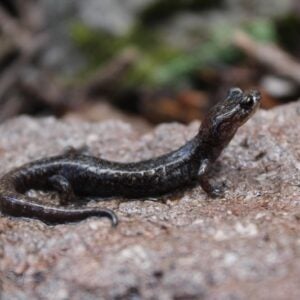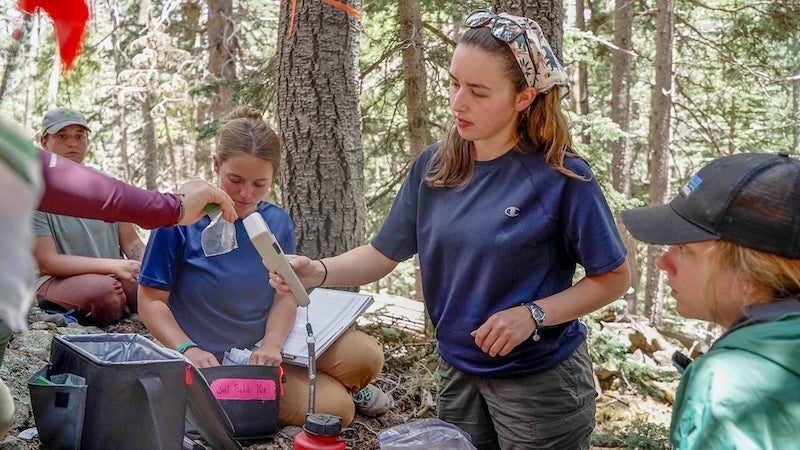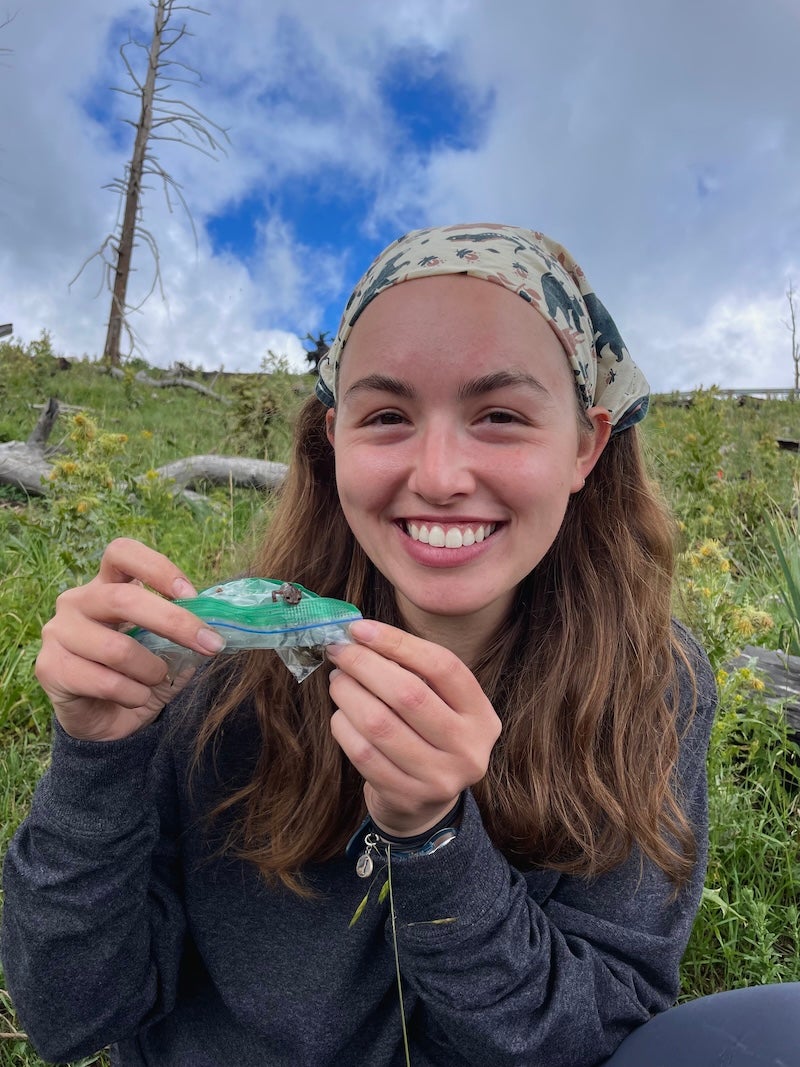In forests that have been affected by severe wildfires in the mountains of New Mexico, there can be surprising signs of life under rocks and logs even in areas that have recently burned: salamanders. Although most salamanders live in the Appalachian mountains and the Pacific Northwest, a small group of species have managed to persist in the mountains of the Southwest U.S. where wildfire is the primary natural disturbance on the landscape. Salamanders are cold-blooded and require cool, damp conditions to survive, so these salamanders have adopted habits that ensure their continuation, such as staying underground during the typical fire season.
However, as climate change alters the scale and frequency of wildfires, threatened salamander populations have been declining. Marissa Ardovino, a graduate student in biological and environmental science with a specialization in ecology and ecosystem sciences, researches the Sacramento Mountain salamanders’ (Anedies hardii) response to such changes. This population is native to mountainous regions of south-central New Mexico.
“With the hotter, drier effects of climate change, fires in the region are expected to grow larger, more severe, and more frequent. This could lead to longer term habitat impacts than what salamander populations experienced historically,” Ardovino says. Because the species’ future is uncertain, she adds that “the next big question is: why can populations persist in some areas after a fire and not others?”
“Understanding the effects of this contemporary fire on Sacramento Mountain salamanders will be key to developing conservation plans for the species,” she adds.

Growing up in the suburbs of Washington, D.C., Ardovino’s weekend hikes along the Blue Ridge Parkway with her dad inspired a growing passion for amphibians and reptiles. When the time came to choose a major as an undergraduate at Virginia Tech, wildlife conservation was an easy choice. “I was able to learn so much about the salamander diversity of southern Appalachia,” she says. “From there I was hooked!”
While working as an AmeriCorps Scientists in Parks technician at Bandelier National Monument in Los Alamos, New Mexico, in 2021, Ardovino met Nancy Karraker, a professor in URI’s Department of Natural Resources Science. They both joined Rachel Loehman, a United States Geological Survey (USGS) Fire Ecologist, in surveying several federally-owned properties throughout northern New Mexico for the endangered Jemez Mountains salamander (Plethodon neomexicanus).
Some time later, Ardovino decided to pursue her master’s degree at URI to work with Karraker on another endemic New Mexico salamander: the Sacramento Mountain salamander. She has spent two summers looking for them in the mountains of south-central New Mexico in the Lincoln National Forest alongside undergraduate students Lily Collyer, Noah Goldthwait, Kayla Kleinbauer, and Kaitlyn White as part of URI’s Coastal Fellows program.
The team hiked in any weather condition, surveying over one hundred sites in total. “Our goal was to evaluate if salamander populations continued to persist at those sites following recent, 21st-century wildfire events, and to quantify the degree to which the burn severity of those fires impacted salamander persistence,” Ardovino says. “We also conducted surveys at a series of demography sites while PIT-tagging and giving visual implant elastomer tattoos to salamanders as part of a longer term mark-recapture study on the species.” Their work was funded by the USGS, National Park Service, and New Mexico Department of Game and Fish through grants obtained by Karraker and Loehman.
“I never could have done the work that I did without the amazing work ethic of my undergraduate technicians,” Ardovino adds. “Mentoring undergraduate students through the Coastal Fellows program was, by far, the highlight of my graduate school experience.”

Ardovino is presenting her master’s thesis research “Occupancy of a New Mexico endemic salamander across a wildfire burn severity gradient” on December 5, 2024 at 12:30 PM in room 117A of URI’s Coastal Institute building. The public is welcome to attend.

